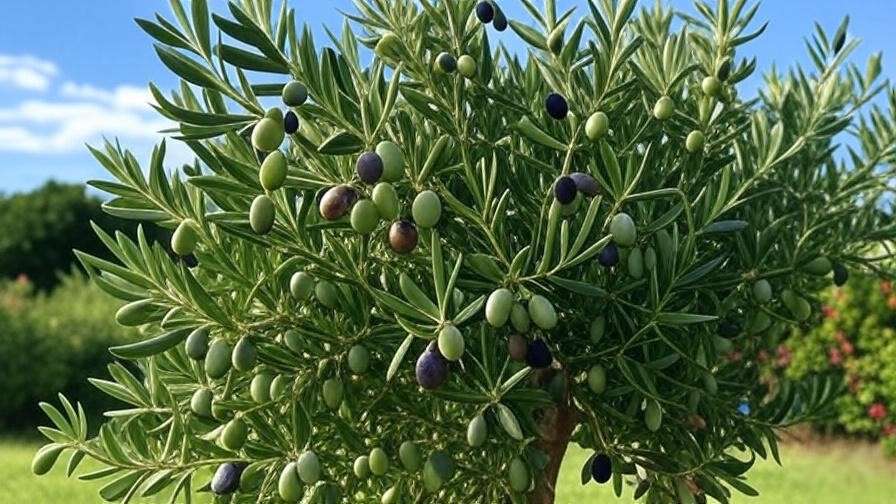Imagine stepping into your backyard to pluck fresh, buttery olives from your very own Olive Arbequina tree — a compact, beginner-friendly variety that brings Mediterranean charm to any garden! Whether you’re dreaming of homemade olive oil or simply want a stunning ornamental tree, the Arbequina is your perfect match. As a horticulturist with over a decade of experience growing olive trees in diverse climates, I’m here to guide you through every step of nurturing this delightful tree. In this comprehensive guide, you’ll discover practical, expert-backed tips to plant, care for, and harvest from your Olive Arbequina tree, ensuring it thrives for years to come. Let’s dive into the world of olive growing and transform your garden into a Mediterranean oasis! 🌞
Understanding the Olive Arbequina Tree 🌱
What Makes the Arbequina Variety Special?
The Olive Arbequina tree, hailing from Catalonia, Spain, is a favorite among home gardeners for its compact size, early fruit production, and high-quality olives. Unlike larger olive varieties, the Arbequina typically grows to just 15–20 feet, making it ideal for small gardens, patios, or even container planting. Its olives are prized for their rich, buttery flavor, perfect for both table olives and premium olive oil. What sets this variety apart is its adaptability — it thrives in USDA zones 8–10 but can tolerate cooler climates with proper care. For beginners, its relatively low maintenance and self-pollinating nature make it a fantastic choice. 🫒
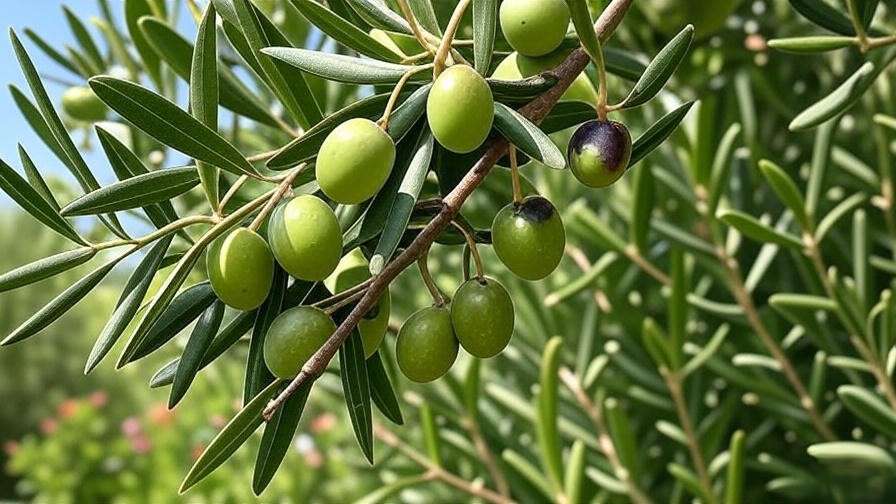
Key Characteristics of the Olive Arbequina Tree
- Growth Habits: Arbequina trees are naturally compact, with a rounded canopy and silvery-green foliage that adds elegance to any landscape. They can be pruned to stay smaller, fitting perfectly in tight spaces.
- Fruit Production: Expect olives within 2–3 years under optimal conditions, with mature trees yielding up to 20 pounds of olives annually.
- Climate Preferences: These trees love warm, sunny climates but can survive temperatures as low as 15°F with protection.
Fun Fact: Arbequina olives are the backbone of many award-winning olive oils due to their high oil content! 🏆
Choosing the Right Location for Your Olive Arbequina Tree ☀️
Sunlight Requirements
Olive Arbequina trees crave sunlight — at least 6–8 hours of direct sun daily is non-negotiable for healthy growth and bountiful fruit. Before planting, observe your garden or patio to ensure your chosen spot isn’t shaded by buildings, trees, or fences. If you’re in a region with intense summer heat, some afternoon shade can prevent leaf scorch, but prioritize full sun for the best results. Pro Tip: Use a sunlight meter or app to measure light exposure if you’re unsure! 🌞
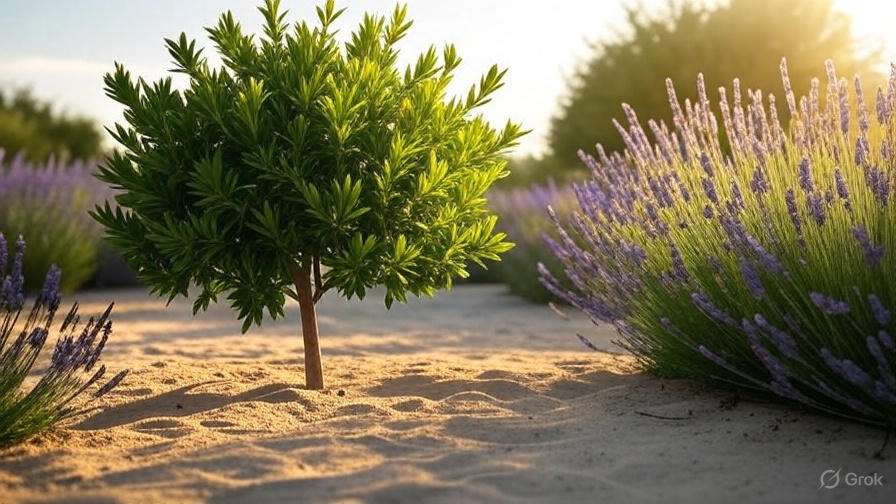
Soil and Drainage Needs
Arbequinas thrive in well-draining, sandy loam soil with a pH between 6.0 and 7.5. Poor drainage is a death sentence for olive trees, as their roots are prone to rot in waterlogged conditions. Test your soil’s drainage by digging a 12-inch hole, filling it with water, and checking how long it takes to drain. If it takes longer than an hour, amend the soil with sand or gravel. A soil pH test kit (available at garden centers) can confirm if your soil needs lime to raise pH or sulfur to lower it. Expert Warning: Avoid heavy clay soils at all costs to keep your tree healthy! 🚫💧
Container vs. Ground Planting
For small spaces or colder climates, growing your Olive Arbequina tree in a container is a game-changer. A 15–20-gallon pot with drainage holes provides ample room for root growth, and terracotta or ceramic pots help regulate moisture. Ground planting is ideal for warmer climates (zones 8–10), where the tree can establish deep roots. Containers offer flexibility — you can move the tree indoors during winter or reposition it for optimal sunlight. Quick Tip: Add a layer of gravel to the pot’s base for extra drainage! 🪴
Planting Your Olive Arbequina Tree 🌍
When and How to Plant
The best time to plant an Olive Arbequina tree is in spring or early fall, when mild temperatures help roots establish without stress. Follow these steps for success:
- Dig the Hole: Make it twice as wide and as deep as the root ball (typically 18–24 inches).
- Prepare the Root Ball: Gently loosen the roots to encourage outward growth.
- Plant: Place the tree in the hole, ensuring the top of the root ball is level with the soil surface. Backfill with a mix of native soil and compost.
- Water: Give it a deep soak to settle the soil.
Common Mistake: Planting too deep can suffocate roots, so double-check the root ball’s position!
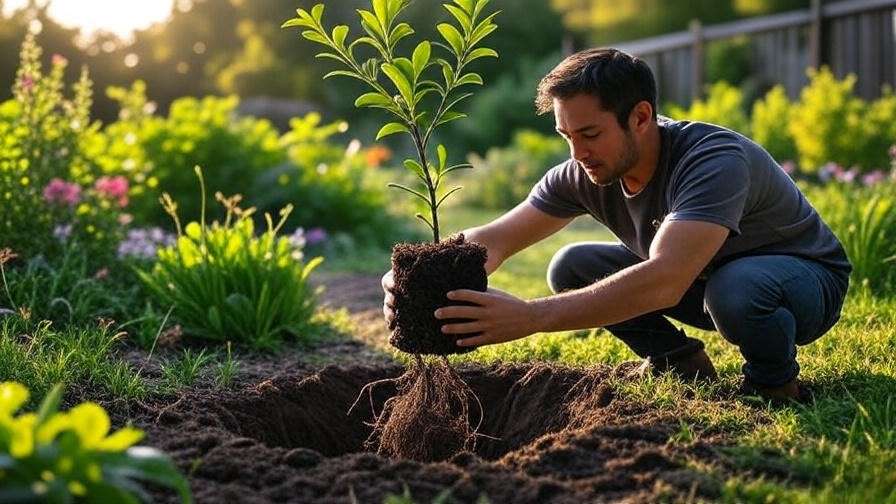
Selecting a Healthy Tree
Choose a tree with vibrant green leaves, a sturdy trunk, and no signs of pests or disease. Look for a well-developed root system (visible if potted) and avoid trees with yellowing leaves or cracked bark. Reputable nurseries or online retailers like FastGrowingTrees.com or local garden centers are great sources. Expert Insight: A 2–3-year-old tree (3–5 feet tall) is ideal for beginners, as it’s mature enough to establish quickly but still affordable. 🌳
Spacing and Companion Planting
If planting multiple Arbequina trees, space them 10–15 feet apart to ensure good airflow and prevent disease. Their self-pollinating nature means a single tree will fruit, but adding a second can boost yields through cross-pollination. Companion plants like lavender, rosemary, or thyme not only enhance your garden’s Mediterranean vibe but also deter pests naturally. Garden Hack: Lavender’s scent repels olive fruit flies, a common pest! 🌸
Essential Care Tips for a Thriving Olive Arbequina Tree 💚
Watering Guidelines
Olive Arbequina trees are drought-tolerant once established, but consistent watering is key during their first 1–2 years. Water deeply but infrequently — about 1–2 inches per week, adjusted for rainfall. In summer, water every 7–10 days; in cooler months, reduce to every 2–3 weeks. Always check soil moisture 2 inches deep before watering. Overwatering leads to root rot, so err on the dry side. Pro Tip: Use a soaker hose for even, efficient watering! 💧
Fertilizing for Optimal Growth
Feed your tree with a balanced, slow-release fertilizer (e.g., 10-10-10) in early spring and mid-summer. Avoid high-nitrogen fertilizers, as they promote leafy growth at the expense of fruit. Organic options like compost or seaweed-based fertilizers work wonders for eco-conscious gardeners. Apply fertilizer around the tree’s drip line (the area under the outer edge of the canopy) and water thoroughly. Did You Know? Over-fertilizing can burn roots, so follow package instructions carefully! 🌿
Pruning for Shape and Productivity
Pruning is essential to maintain your tree’s shape, encourage fruit production, and improve airflow. Prune in late winter or early spring before new growth begins. Use clean, sharp shears to:
- Remove dead, damaged, or crossing branches.
- Thin the canopy to let light penetrate.
- Keep the tree at your desired height (e.g., 6–8 feet for containers).
Expert Insight: Proper pruning can increase olive yields by up to 20%! Start with small cuts and step back to assess the shape. ✂️
Pest and Disease Management
Common pests include olive fruit flies (small, winged insects that damage fruit) and scale insects (tiny, immobile bugs on stems). Inspect your tree regularly and use organic controls like neem oil or insecticidal soap for minor infestations. For diseases like verticillium wilt (caused by soil fungi), ensure proper drainage and avoid overwatering. Remove affected branches immediately to prevent spread. Prevention Tip: Clean up fallen leaves to reduce pest habitats! 🐞
H2: Harvesting and Using Your Arbequina Olives 🥗
H3: When and How to Harvest
The thrill of harvesting your own olives is unmatched! Olive Arbequina trees typically produce fruit ready for picking in late fall, around October to November, depending on your climate. Olives can be harvested at two stages:
- Green Olives: Firm and slightly bitter, ideal for brining or curing.
- Black Olives: Riper, softer, and sweeter, perfect for oil or eating.
To harvest, gently hand-pick the olives to avoid bruising or damaging the tree. Use a small rake or shake branches lightly over a tarp for larger quantities. Pro Tip: Wear gloves to protect your hands and avoid staining from olive juice! 🙌
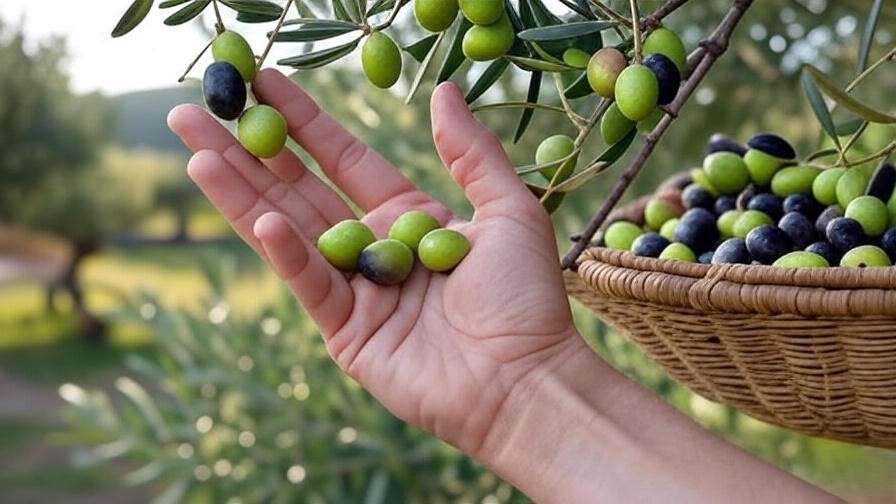
H3: Processing and Storing Olives
Freshly picked olives are bitter and inedible due to oleuropein, a natural compound. To make them palatable, you’ll need to cure them. Here are two beginner-friendly methods:
- Brining: Soak olives in a saltwater solution (1 cup salt per gallon of water) for 4–6 weeks, changing the brine weekly.
- Dry-Curing: Pack green olives in salt for 3–4 weeks, then rinse and store in olive oil.
Store cured olives in airtight jars in the fridge for up to 6 months. Recipe Idea: Blend cured Arbequina olives with garlic, lemon zest, and olive oil for a delicious homemade tapenade to wow your guests! 🍽️
H3: Making Olive Oil at Home
Producing your own olive oil is a rewarding challenge, though it requires some effort for small-scale gardeners. You’ll need about 10–20 pounds of olives to yield a small batch (1–2 cups) of oil. Here’s a simplified process:
- Clean and Crush: Wash olives and crush them into a paste using a food processor or manual press.
- Press the Paste: Use a home oil press or cheesecloth to extract the oil.
- Separate and Store: Let the oil settle to separate from water, then store in dark glass bottles.
Reality Check: Home oil production is labor-intensive, so many gardeners opt to enjoy their olives cured or sell them to local presses. 🫙
H2: Troubleshooting Common Olive Arbequina Tree Problems 🛠️
H3: Why Isn’t My Tree Fruiting?
If your Olive Arbequina tree isn’t producing olives, consider these culprits:
- Insufficient Sunlight: Less than 6 hours of direct sun can reduce fruiting. Relocate potted trees or trim nearby shade sources.
- Poor Pollination: While Arbequinas are self-pollinating, windy or rainy weather can disrupt pollen spread. Adding a second tree nearby can help.
- Nutrient Deficiencies: Low potassium or phosphorus can stunt fruit development. Use a balanced fertilizer with micronutrients.
Solution: Conduct a soil test and ensure proper care practices to boost yields. Patience is key — young trees may take 2–3 years to fruit reliably.
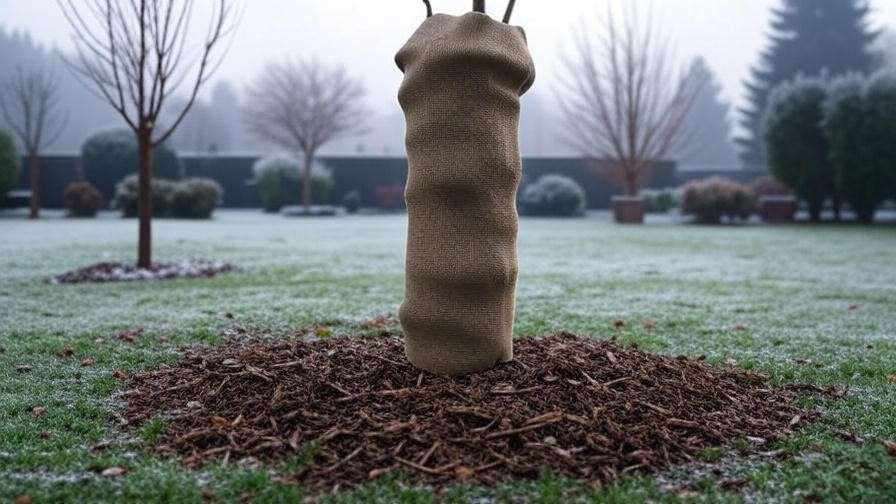
H3: Leaf Drop and Yellowing Leaves
Leaf drop or yellowing can signal stress. Common causes include:
- Overwatering: Soggy soil suffocates roots. Let the top 2 inches of soil dry out before watering again.
- Pests: Check for scale or spider mites under leaves. Treat with neem oil.
- Environmental Stress: Sudden temperature drops or poor soil can cause leaf issues. Mulch to stabilize soil temperature.
Action Plan: Diagnose the issue by checking soil moisture, inspecting leaves, and reviewing recent weather changes. Adjust care accordingly. 🍂
H3: Winter Care for Colder Climates
In zones below 8, protecting your Olive Arbequina tree during winter is crucial. For potted trees, move them indoors to a sunny spot (like a south-facing window) when temperatures drop below 20°F. For ground-planted trees:
- Mulch: Apply a 3–4-inch layer of organic mulch (e.g., bark or straw) around the base to insulate roots.
- Wrap: Use burlap or frost blankets to shield the trunk and branches from freezing winds.
- Water Sparingly: Reduce watering in winter to prevent root rot.
Real-Life Example: A gardener in zone 7 successfully overwintered their Arbequina by wrapping it in burlap and moving it to a garage during freezes! ❄️
H2: FAQs About Growing Olive Arbequina Trees ❓
- Can I grow an Olive Arbequina tree indoors? Yes, with 6–8 hours of bright light (use grow lights if needed) and proper drainage.
- How long until my tree produces olives? Typically 2–3 years with optimal care, though small yields may appear sooner.
- Do Arbequina trees need a pollinator? No, they’re self-pollinating, but a second tree can enhance fruit production.
- What’s the best way to prevent pests? Regular inspections and organic sprays like neem oil keep pests at bay.
- How much water does my tree need in summer? About 1–2 inches per week, less in cooler months. Always check soil moisture first.
H2: Expert Tips for Long-Term Success 🌟
- Mulching Magic: Apply a 2–3-inch layer of organic mulch to retain moisture, regulate soil temperature, and reduce weeds. Refresh annually.
- Seasonal Checklist:
- Spring: Fertilize, prune, and check for pests.
- Summer: Water consistently and monitor for fruit fly activity.
- Fall: Harvest olives and reduce watering.
- Winter: Protect from frost and minimize watering.
- Community Wisdom: Join olive-growing forums like GardenWeb or Reddit’s r/gardening for real-world tips from fellow growers.
- Sustainability Tip: Use a rain barrel to collect water for irrigation, mimicking the Arbequina’s Mediterranean roots! 💧
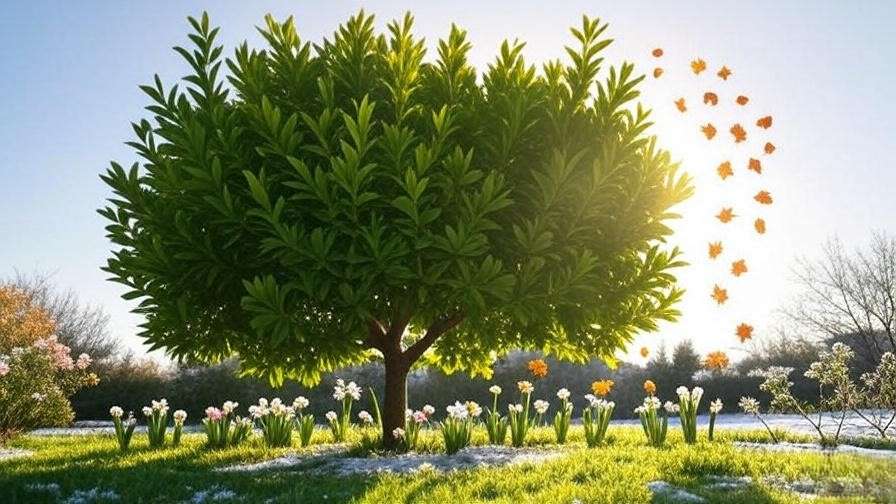
H2: Conclusion and Call-to-Action 🎉
Growing an Olive Arbequina tree is a rewarding journey that brings beauty, flavor, and a touch of the Mediterranean to your home. With the right location, proper planting, and consistent care, your tree will thrive, producing delicious olives for years to come. Whether you’re a beginner or a seasoned gardener, these expert tips empower you to succeed. Start your olive-growing adventure today, and share your progress in the comments below — we’d love to hear your success stories! 🌳 For more Mediterranean gardening inspiration, check out our articles on growing lavender or designing a drought-tolerant garden. Happy planting! 🫒

